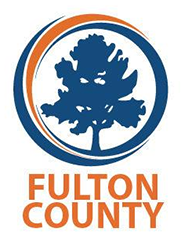Hazard Mitigation
Hazard Mitigation
Hazard mitigation is cost-effective and sustainment action taken to reduce or eliminate the long-term risk to human life or property from natural, technological, and human-caused hazards. Every five years, Fulton County is required to update the Multijurisdictional Hazard Mitigation Plan, and get approval from the Georgia Emergency Management Agency (GEMA) and the Federal Emergency Management Agency (FEMA).
Hazard Mitigation Planning for Resilient Communities
Disasters can cause loss of life, damage buildings and infrastructure, and have devastating consequences for a community’s economic, social, and environmental well-being. Hazard mitigation is the effort to reduce loss of life and property by lessening the impact of disasters. In other words, hazard mitigation keeps natural hazards from becoming natural disasters.
Hazard mitigation is best accomplished when based on a comprehensive, long-term plan developed before a disaster strikes. Mitigation planning is the process used by state, tribal, and local leaders to understand risks from natural hazards and develop long-term strategies that will reduce the impacts of future events on people, property, and the environment.
The Local Mitigation Planning Process
The mitigation plan is a community-driven, living document. The planning process itself is as important as the resulting plan because it encourages communities to integrate mitigation with day-to-day decision making regarding land use planning, floodplain management, site design, and other functions. Mitigation planning includes the following elements:
Public Involvement – Planning creates a way to solicit and consider input from diverse interests, and promotes discussion about creating a safer, more disaster-resilient community. Involving stakeholders is essential to building community-wide support for the plan. In addition to emergency managers, the planning process involves other government agencies, businesses, civic groups, environmental groups, and schools.
Risk Assessment – Mitigation plans identify the natural hazards and risks that can impact a community based on historical experience, estimate the potential frequency and magnitude of disasters, and assess potential losses to life and property. The risk assessment process provides a factual basis for the activities proposed in the mitigation strategy.
Mitigation Strategy – Based on public input, identified risks, and available capabilities, communities develop mitigation goals and objectives as part of a strategy for mitigating hazard-related losses. The strategy is a community’s approach for implementing mitigation activities that are cost-effective, technically feasible, and environmentally sound as well as allowing strategic investment of limited resources.
Disaster Mitigation Act of 2000
The Robert T. Stafford Disaster Relief and Emergency Assistance Act, as amended by the Disaster Mitigation Act of 2000, is intended to “reduce the loss of life and property, human suffering, economic disruption, and disaster assistance costs resulting from natural disasters.” Under this legislation, state, tribal, and local governments must develop a hazard mitigation plan as a condition for receiving certain types of non-emergency disaster assistance through the Hazard Mitigation Assistance Programs. The regulatory requirements for local hazard mitigation plans can be found at Title 44 Code of Federal Regulations §201.6.
AFCEMA hazard mitigation faq's
What is the benefit of hazard mitigation planning?
The benefits include:
• Assisting local communities with reducing risks by identifying vulnerabilities and developing strategies to lessen and/or eliminate the effects of a potential hazard;
• Building partnerships and reducing duplication of efforts among organizations with similar or overlapping goals;
• Creating more sustainable and disaster-resistant communities;
• Communicating needs to state and federal officials when funding becomes available, particularly after a disaster;
• Increasing public awareness of local hazards and disaster preparedness.
What is the purpose of hazard mitigation planning?
The purpose of the Hazard Mitigation Planning is to:
• Identify the hazards that impact Fulton County, including the cities of Fulton County (Alpharetta, Atlanta, Chattahoochee Hills, College Park, East Point, Fairburn, Hapeville, Johns Creek, Milton, Mountain Park, Palmetto, Sandy Springs, South Fulton, and Union City)
• Identify actions and activities to reduce any losses from those hazards;
• Establish a coordinated process to implement the Plan.


